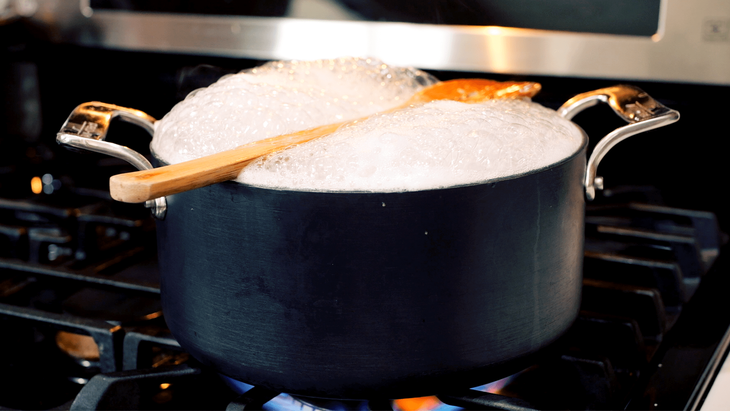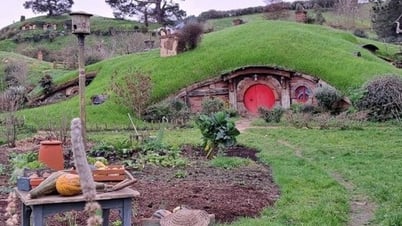
Placing a wooden spoon over the mouth of a pot of boiling water can prevent the water from overflowing - Photo: virtual-table
One of the most common kitchen accidents is when you turn away for a moment and a pot of gently simmering water suddenly boils over, sending water and foam flying all over the stovetop. This is not only inconvenient, but also poses a risk of burns and equipment damage.
The main cause is not the pure water but the ingredients put into the pot, especially the starch and protein in foods such as noodles, rice, porridge, milk...
Why wooden spoon?
According to The Conversation , when boiling a mixture containing carbohydrates (starch from rice, noodles, potatoes...) or proteins (like casein in milk), these molecules do not dissolve completely in water but exist in the form of a colloid.
When heated at high temperatures, these molecules form a sticky gel around the gas bubbles produced by boiling water. These gas bubbles, "coated" by a layer of starch or casein, do not break as easily as regular water bubbles, resulting in foam overflowing from the pot.
In the case of milk, the air bubbles are smaller but denser in texture, forming a foamy layer that can rise very quickly if the temperature is not controlled.
Among the kitchen hacks circulating on social media, placing a dry wooden spoon across the mouth of a pot is seen as a simple way to prevent boiling water from overflowing. In fact, this trick has a scientific basis and is effective, thanks to two main mechanisms.
The first is the surface cooling effect. When you place a wooden spoon across the mouth of a boiling pot, the part of the spoon that is exposed to the air is usually at a lower temperature than the boiling water inside. This creates a local "cool" area right at the mouth of the pot, helping to reduce the temperature at the point where air bubbles form and adhere to the pot's walls, thereby somewhat limiting the growth and explosion of air bubbles.
The second mechanism comes from the physical properties of wood. Wood is a porous material and is very absorbent when dry. When air bubbles come into contact with the surface of a wooden spoon, this porous structure acts as a breaking surface, causing the bubbles to break prematurely before they can rise and spill out of the pot. You can think of this as a dry sponge absorbing steam and disrupting the flow of air.
However, according to scientists, this trick is not a long-term solution. When the wooden spoon is constantly exposed to heat and steam, it will gradually heat up and become wet. At that time, its original porous properties and cooling ability will decrease significantly. It will no longer be able to break up the foam as effectively as before, and the air bubbles will continue to accumulate and overflow as usual.
Therefore, wooden spoons should be considered as temporary or supporting measures, but cannot replace temperature control and pot capacity, which are decisive factors in preventing pot overflow when cooking.
Long-term solutions from a scientific perspective
Instead of relying solely on wooden spoons, experts recommend that housewives should:
Use a larger pot so food has enough room to boil without overflowing.
Reduce heat when pot begins to boil vigorously.
Stir gently frequently to disperse air bubbles.
If you need to leave the stove, turn down the heat or turn off the stove temporarily to ensure safety.
According to experts, efficient cooking requires not only the right tools but also constant attention and observation. "A pot that is watched will never overflow," if the cook maintains attention and controls the temperature properly.
Source: https://tuoitre.vn/vi-sao-nhieu-nguoi-dat-muong-go-len-mieng-noi-khi-nau-an-20250507233131785.htm


























![[Photo] President Luong Cuong talks on the phone with South Korean President Lee Jae Myung](https://vphoto.vietnam.vn/thumb/1200x675/vietnam/resource/IMAGE/2025/6/13/eee54a4c903f49bda277272b1dda68e8)






































































Comment (0)